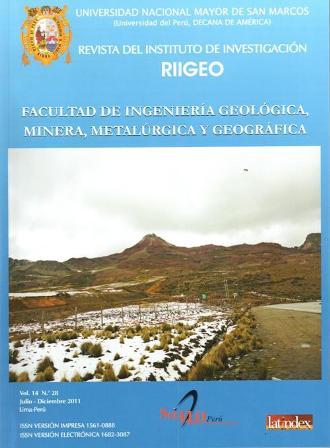Variable control in the deep cone thickener in the recovery of highly fluid tailings
DOI:
https://doi.org/10.15381/iigeo.v14i28.671Keywords:
Deep Cone, Sedimentation, Consolidation, Flocculation, Yields StressAbstract
This article includes tests in a deep cone pilot thickener, considering the process conditions for optimal flocculation with laboratory tests determining the type of flocculant, concentration of solids in the feed and dosage to maximize the treatment ratio (TPD / m2 ). The objective is to determine the adequate flocculation conditions, which allow the maximum clarity of the liquid and maximum densities in the discharge with the minimum dosage that allows selecting the feeding conditions for the operation of the pilot thickener. Once the feeding conditions have been determined, it follows a series of treatment ratios to determine the maximum possible load under optimal flocculation conditions in terms of TPD / m2. During these series, the solids level is kept constant and the density of the underflow is monitored, maintaining the feed-discharge balance. Overflow, discharge and feed samples were taken as frequently as possible to determine any variations in feed characteristics that may affect flocculation and consequently the clarity of overflow and thickening. Typically, changes in particle size distribution, mineral type, and pH have a major impact.
Downloads
Published
Issue
Section
License
Copyright (c) 2011 Carlos Ames Ramírez, Daniel L Lovera Dávila

This work is licensed under a Creative Commons Attribution-NonCommercial-ShareAlike 4.0 International License.
AUTHORS RETAIN THEIR RIGHTS:
a. Authors retain their trade mark rights and patent, and also on any process or procedure described in the article.
b. Authors retain their right to share, copy, distribute, perform and publicly communicate their article (eg, to place their article in an institutional repository or publish it in a book), with an acknowledgment of its initial publication in the Rev. Inst. investig. Fac. minas metal cienc. geogr.
c. Authors retain theirs right to make a subsequent publication of their work, to use the article or any part thereof (eg a compilation of his papers, lecture notes, thesis, or a book), always indicating the source of publication (the originator of the work, journal, volume, number and date).






